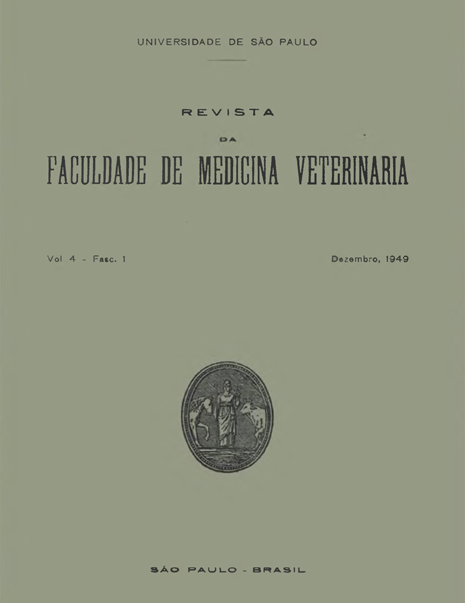Podology's revision
DOI:
https://doi.org/10.11606/issn.2318-5066.v4i1p99-160Keywords:
The article has no key-words.Abstract
After longthy discussions and much experience, it is today accepted, that the condition of the good nutrition of the horse’s foot is the contact of its frog with the ground. The pressure on the digital cushion at each step of the animal regulates the circulation of the blood in every part of the hoof and so develops each one of them. Among the many'facts that cannot be explained by this theory, two are| significant, firstly, that the contracted hoof is found to be much more common in race horses than in the heavy type, and secondly, this contraction only takes place commonly in one of the fore hoofs and not in both. During the growth of the foal, the different parts of the hoof become developed in proportion to the intensity of their excitement and this condition remains unchanged during the life of the animal. The wearing of shoes tends to cause diminution and irregularity in the external action on the hoof but when the shoes are removed the hoof returns to its normal conditions.During its development there are two main features which arise in the growth of the hoof, firstly, the hoof itself and its corium are regulated by( the health and activity of the animal, the life of other parts (bones, ligaments, tendons, cartilages and the laminae) is merely vegetative and these are protected against all external excitement. The vessel system. is also corresponding to these facts. The digital arteries, through the collaterals of the digital cushion, supply blood to the corium of the hoof and this supply is so important that it results in a very great decrease of blood pressure in the terminal arch, arul despite their large capacity, the arteries issued by it are merely sufficient to sustain the reduced life of the internal organs. This equilibrium can, however, conserve itself only with the fact that the circulation of blood in the corium and in the digital cushion is sufficiently great to lessen the pressure in the digital anastomosis and all lessening of this circulation, as that caused through injury, lameness or shoeing, brings new condition of equilibrium to all internal and external parts of the foot.


